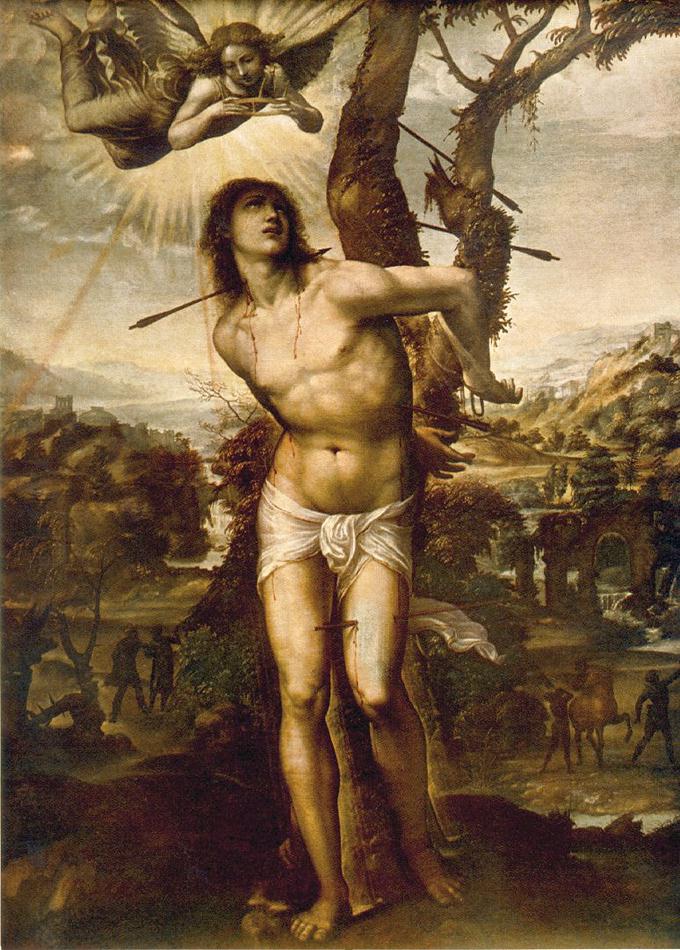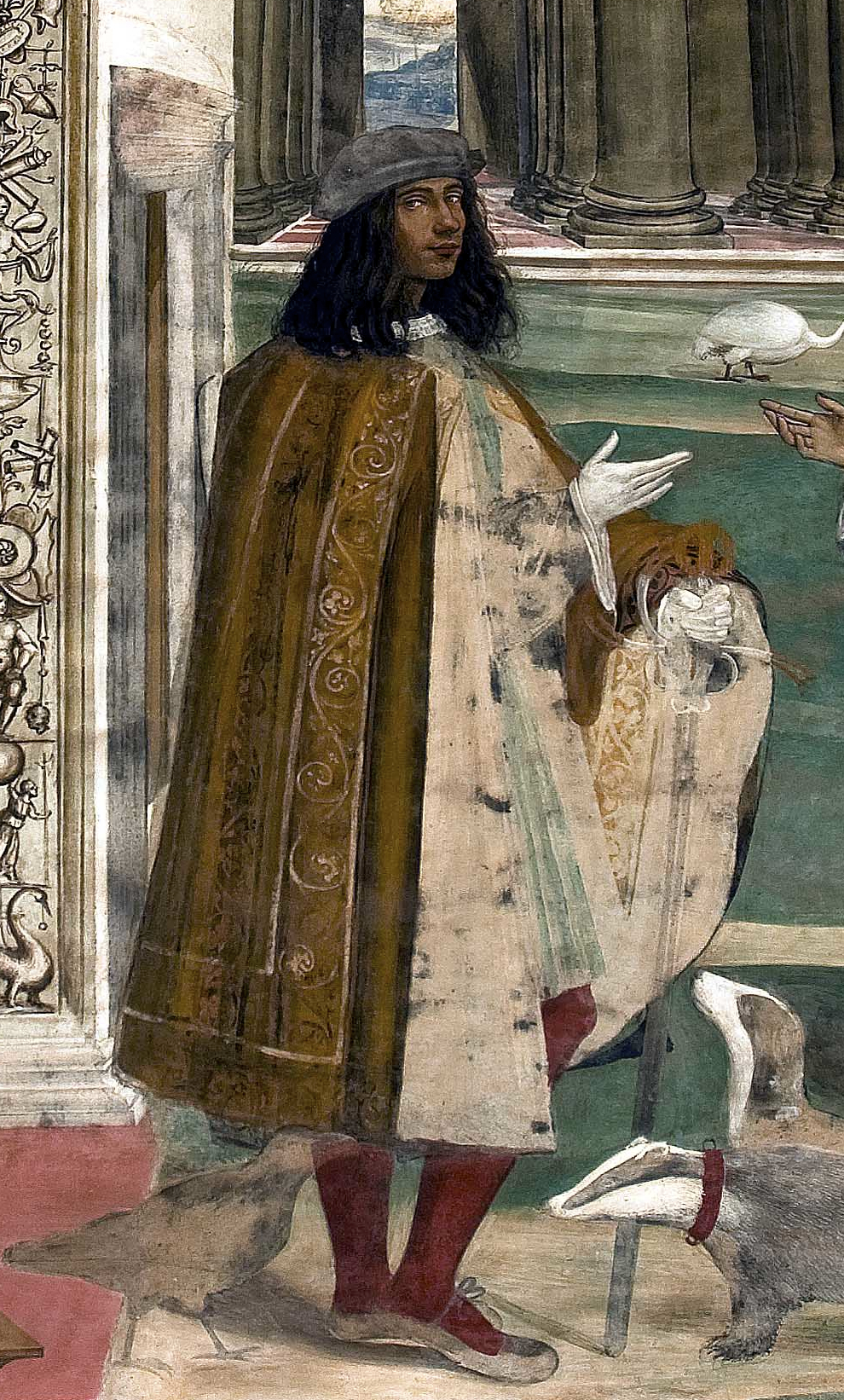Saint Sebastian (died c. 288) was an early Christian saint and martyr. He was killed during the Roman emperor Diocletian's persecution of Christians. He is commonly depicted in art and literature tied to a post or tree and shot with arrows. Despite this being the most common artistic depiction of Sebastian, he was, according to legend, rescued and healed by Irene of Rome. Shortly afterwards he criticized Diocletian in person and as a result was clubbed to death. As protector of potential plague victims (a connection popularized by the Golden Legend) and soldiers, Sebastian occupied an important place in the popular medieval mind. He was among the most frequently depicted of all saints by Late Gothic and Renaissance artists, in the period after the Black Death. The opportunity to show a semi-nude male, often in a contorted pose, also made Sebastian a favorite subject. His shooting with arrows was the subject of the largest engraving by the Master of the Playing Cards in the 1430s, when there were few other current subjects with male nudes other than Christ. Sebastian appears in many other prints and paintings, although this was also due to his popularity with the faithful. Among many others, Botticelli, Perugino, Titian, Pollaiuolo, Giovanni Bellini, Guido Reni (who painted the subject seven times), Mantegna (three times), Hans Memling, Gerrit van Honthorst, Luca Signorelli, El Greco, Honoré Daumier, John Singer Sargent and Louise Bourgeois all painted Saint Sebastian. An early work by the sculptor Gianlorenzo Bernini is also of Saint Sebastian.




St. Sebastian
oil on canvas • 206 x 154 cm
 Il Sodoma
Il Sodoma